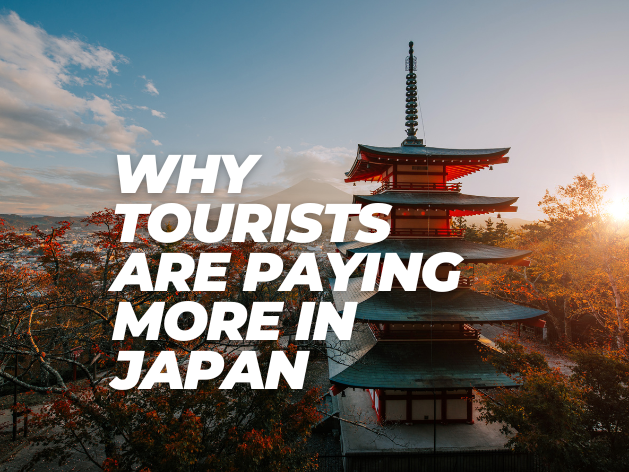With Australians visiting Japan in record numbers, some restaurants and tourist attractions have started implementing a two-tier pricing system for visitors and locals.
Japan's weak currency is attracting tourists in droves, but it is raising costs for local businesses.All-you-can-eat seafood restaurant Tamatebako, located in Shibuya, one of Tokyo's busiest districts, is one of the restaurants charging different prices for Japanese residents and tourists.
A note in Japanese at the bottom of the eatery's menu states that Japanese residents receive a 1,000-yen ($9.50) discount.
The "regular" price of an all-you-can-eat seafood buffet is 8,778 yen ($83), while those with a certificate of residence in Japan can have the same meal for 7,678 yen ($73).
Restaurant owner Shogo Yonemitsu told ABC that the influx of tourists forced him to hire English-speaking staff who were paid slightly more.
He said the price difference also took into account the "extra labor of teaching foreigners the correct manners in Japanese restaurants."
It would be unfair to pass on the extra costs created by tourists to locals, he said.
Weak Japanese yen
Due to Japan's low inflation and interest rates, the yen has lost about a third of its value against the U.S. dollar since 2021.
The currency's weakness has made Japan an attractive destination for travelers.
According to the Japan National Tourism Organization, the number of tourists visiting Japan every month since January this year has surpassed pre-pandemic levels. A record 252,900 Australians visited Japan between January and March, compared with 172,896 in the same period in 2019. This included 82,000 people in March, almost double the number in March 2019. However, the weak yen has also pushed up the prices of imports such as food, forcing restaurants to either raise prices or pass on the costs. When asked about customer feedback, Yonemitsu said, "Our customers know our pricing system, so it hasn't caused any problems." Tourist hotspots implement two-tier pricing Restaurants aren't the only ones implementing tiered pricing. Himeji Castle, a UNESCO World Heritage Site in western Japan, is considering quadrupling the entrance fee for foreign tourists.
Hideyasu Kiyomoto, the mayor of Himeji city, said at a press conference that he supports different prices.
Japan's iconic Mount Fuji introduced a mandatory 2,000 yen ($19) climbing fee in May, but some have called for the fee for tourists to be raised.
Climber Ken Noguchi said the fee is not enough to combat overtourism.
Japanese politicians such as Kenta Izumi have also expressed their support for two-tier pricing.
Stable wages
Although the weakening yen has allowed tourists visiting Japan to spend more, stagnant wages in the country mean that the purchasing power of locals remains relatively low.
Wages in Japan have barely risen in the past 20 years, with the average minimum wage still set to be just 1,004 yen ($9.52) per hour in 2023, according to Japan's Ministry of Health, Labour and Welfare.
"A two-tier pricing system could be a way to make restaurants more affordable for locals," said Garth Lean, senior lecturer in tourism and heritage studies at Western Sydney University.
"But it could mean it becomes a more expensive experience for tourists and they may feel they are being taken advantage of," Dr Lean said.
The Japanese Cabinet has released a white paper on tourism, addressing growing concerns about overtourism.
It says the government will support increased efforts to create lasting solutions to the problem.
The Japan National Tourism Organization told the ABC that "in general, tourists should pay whatever price they deem reasonable during their visit to Japan."



.png)





No comments
Post a Comment